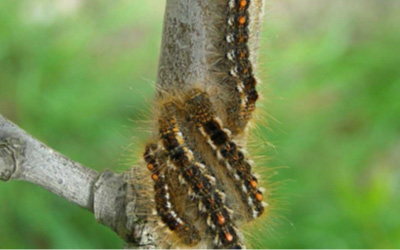
All About Browntail Moth Caterpillars (BTM)
What Browntail Moths Are & What You Can Do:
Last week at the UMaine Extension Cumberland County office, we noticed a few caterpillar nest tents in the branches of the crab apples. The caterpillars had just begun to hatch. We removed them by cutting the nests out of the trees.
It is important that even if you are not able to determine the species of caterpillars, you will still want to use extreme care when removing the nest and use appropriate protection equipment, especially gloves.
To cut the nests out of trees: use pruners and place the nests directly into a bucket of soapy water. Allow the nests to sit in the soapy water for several hours, then the nests may be discarded. This removal method is an alternative to using pesticides, especially for small-scale problems and especially in environmentally sensitive areas.
What are Browntail Moths?
Browntail Moth caterpillars (BTM) are a common invasive species of caterpillar which affects the health of Maine’s forests and people. This species of caterpillar has toxic hairs that can cause a skin rash. This risk map of heavily infested areas shows where in Maine BTM’s are known to be: Browntail Moth locations (PDF)
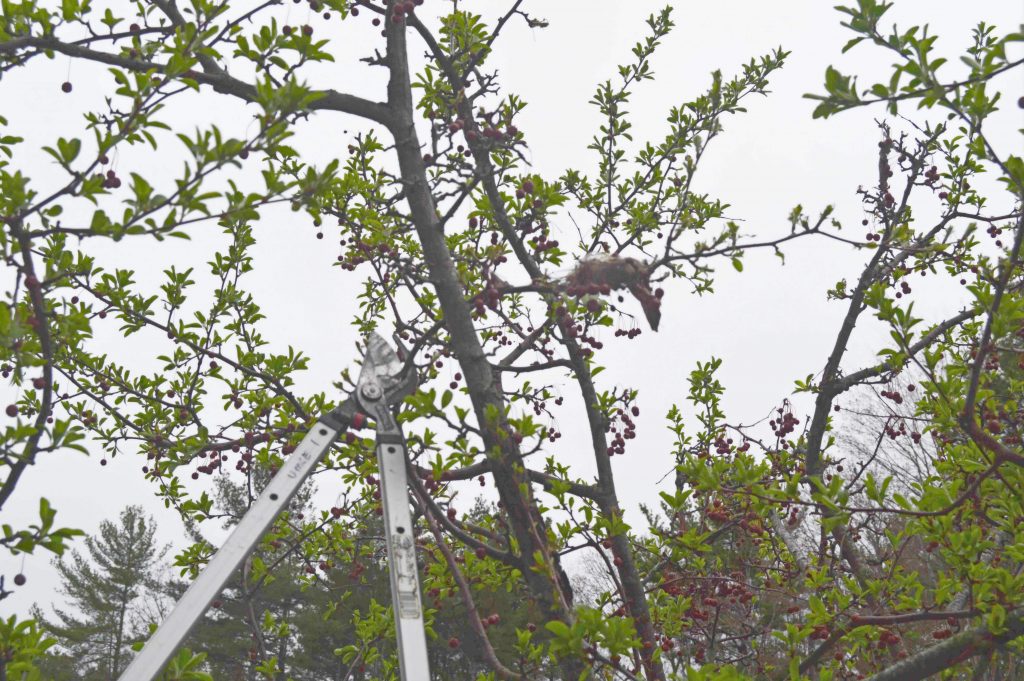
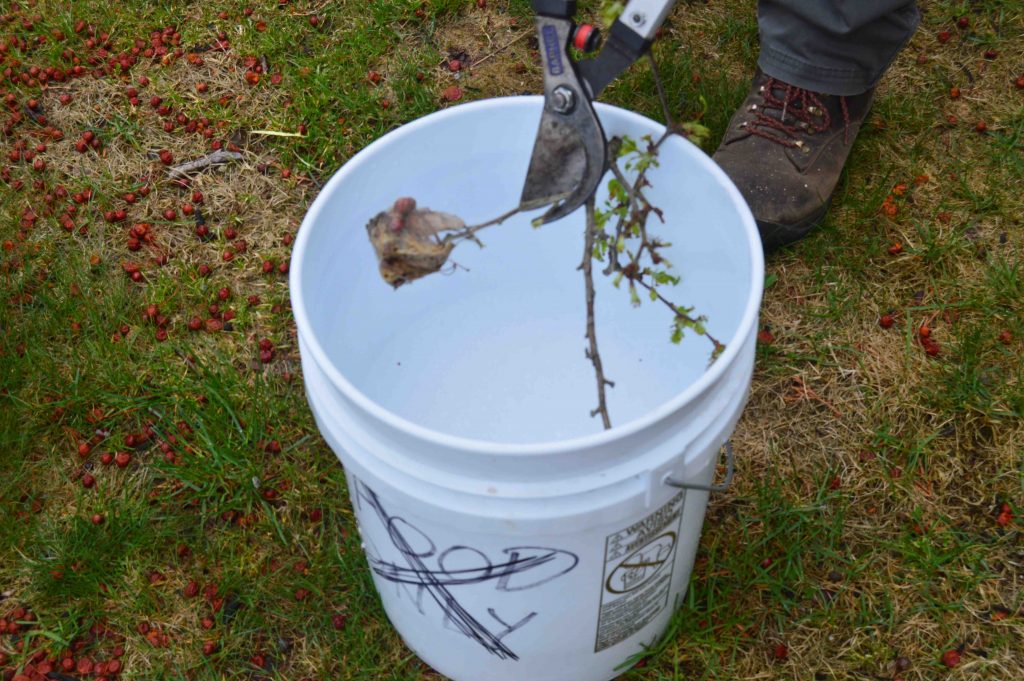
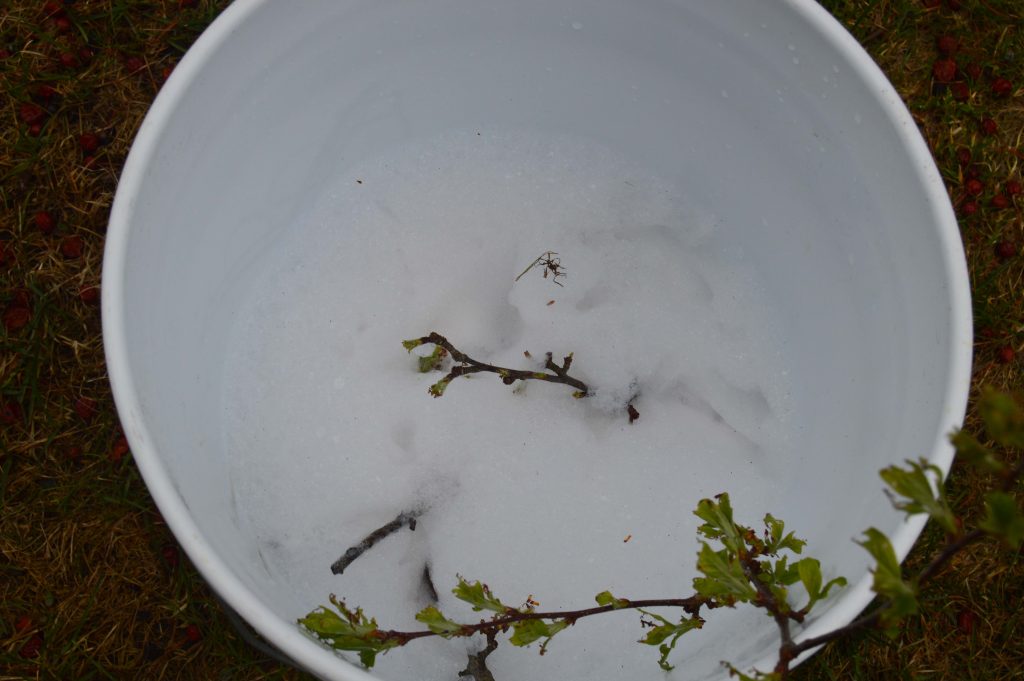
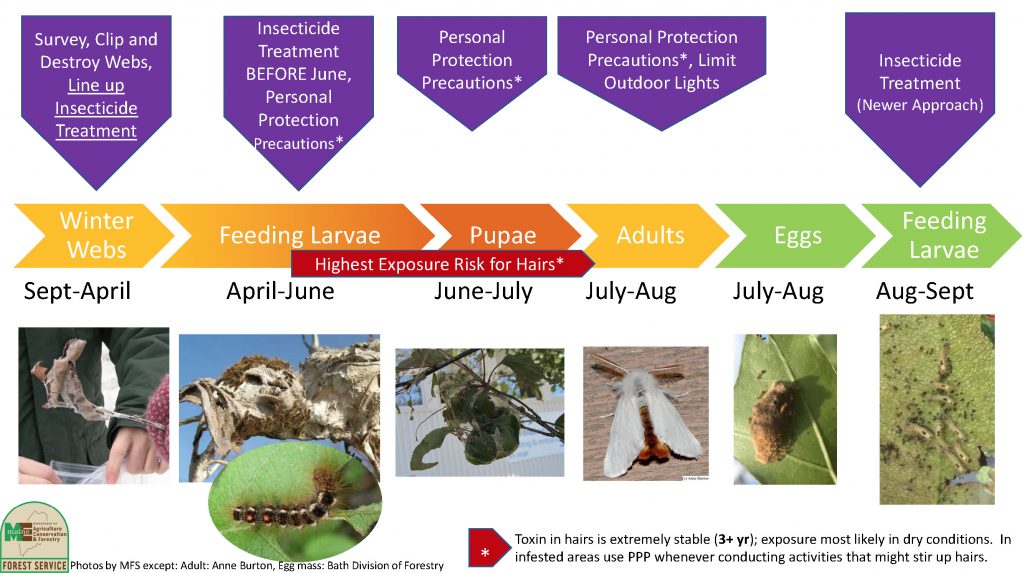
What can the general public do about BTM’s?
- Report your detection of BTM in this survey to the Maine Forest Service if this is an area outside of where the BTM is already known to be widespread.
- Make a donation to support UMaine Browntail Moth research. As it is difficult to fund research for BTM, any contributions are greatly appreciated!
Donations can be mailed to:
THE UNIVERSITY OF MAINE FOUNDATION,
TWO ALUMNI PLACE,
ORONO, ME 04469-5792
(Please specify that funds are specifically for support of the University of Maine Browntail Moth Project.)
